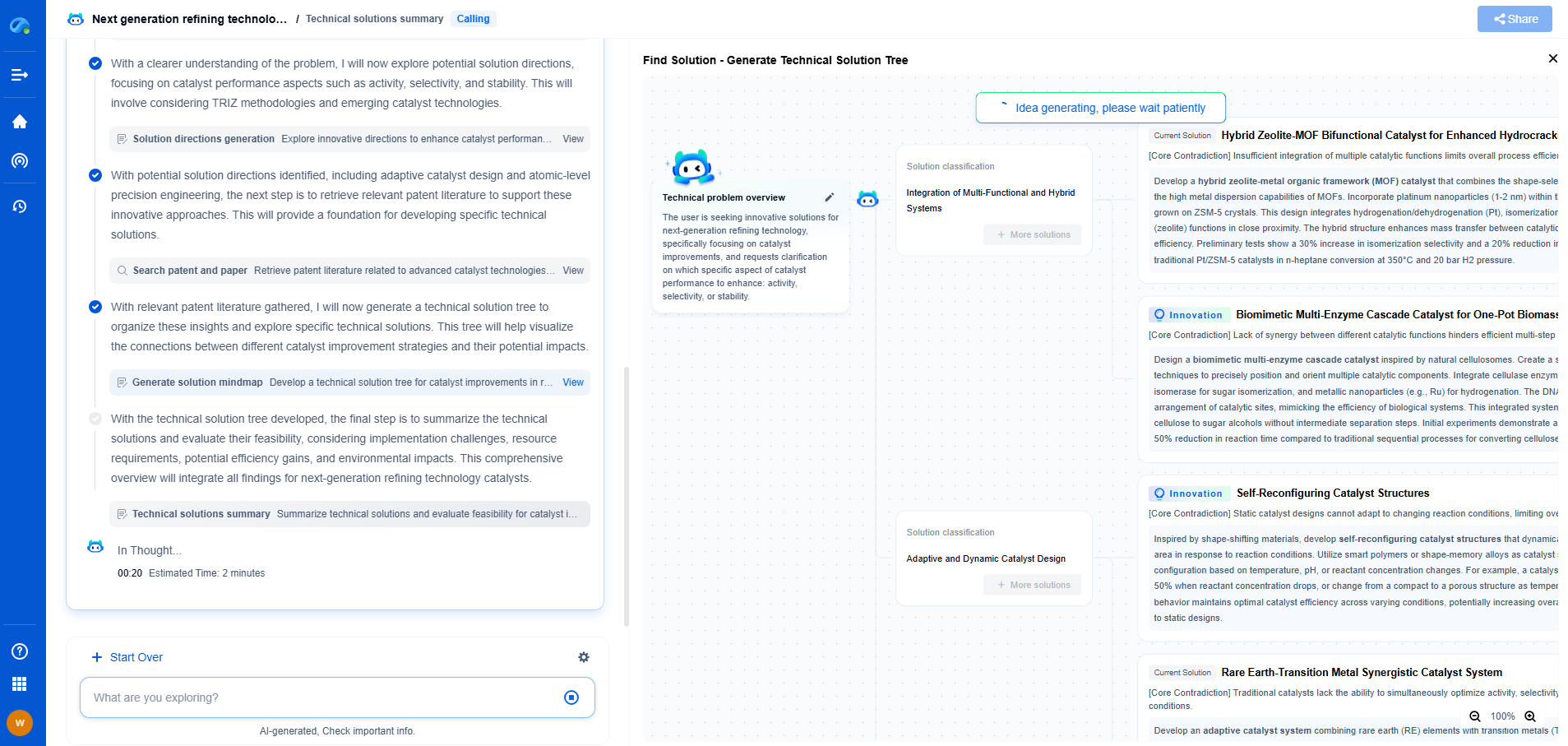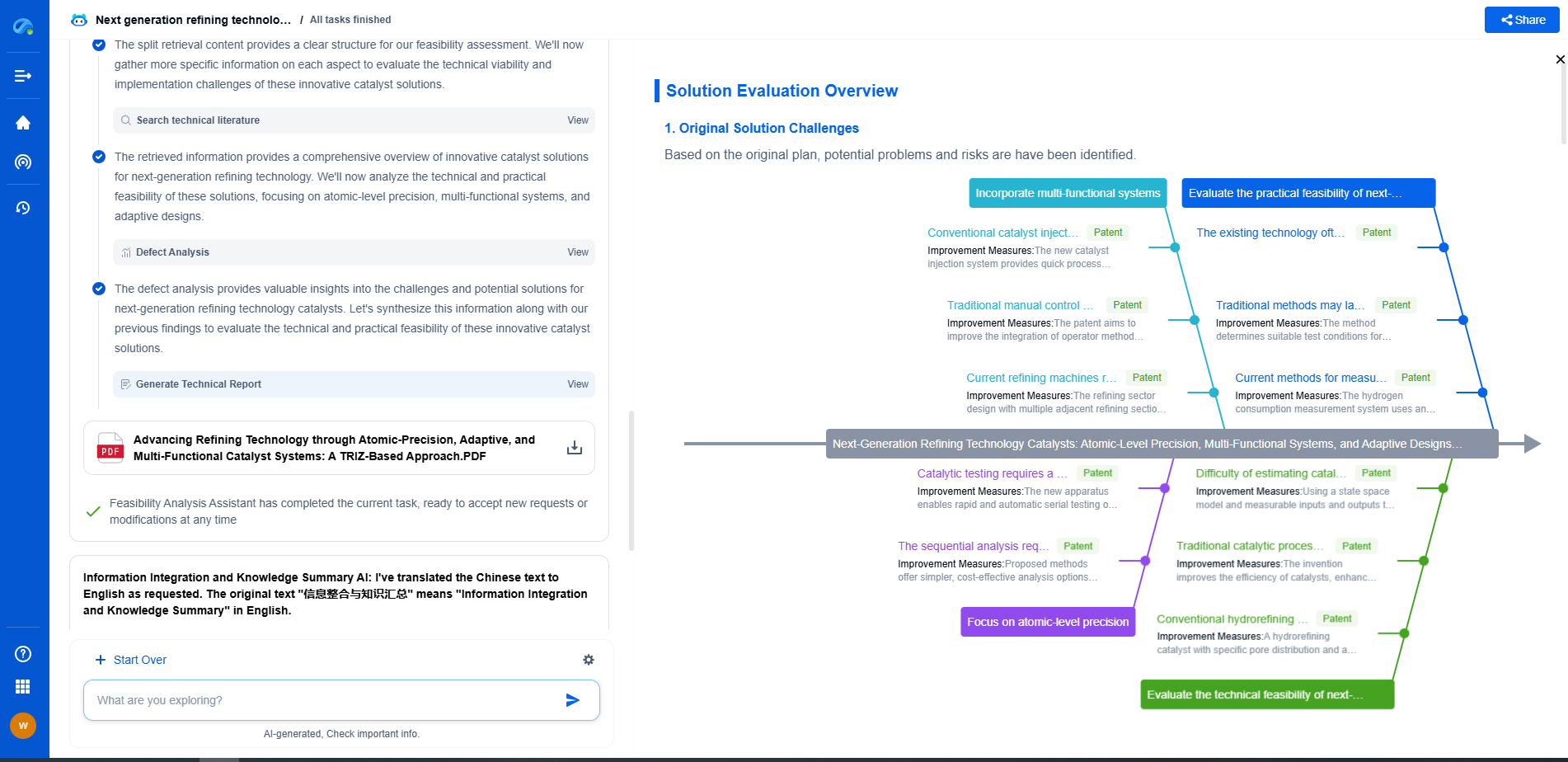Ferrite vs. Iron Core: Which Is Better for High-Frequency Transformers?
JUN 26, 2025 |
In the world of electrical engineering, especially when dealing with transformers, the choice of core material is crucial. Ferrite and iron cores are two popular options, each with its distinct properties and applications. Understanding their differences and applications is vital to determining which is better suited for high-frequency transformers.
Ferrite Cores: Composition and Characteristics
Ferrite is a ceramic-like material made by combining iron oxide with metallic elements such as zinc, manganese, or nickel. These materials are non-conductive, which makes them exceptional for high-frequency applications. One of the primary advantages of ferrite cores is their low eddy current loss. This feature is particularly important for high-frequency transformers, as it minimizes energy loss and enhances efficiency.
Moreover, ferrite cores are known for their high magnetic permeability. This property allows them to handle a variety of magnetic fields without saturating. Ferrite cores also perform well in environments where heat is a concern, as they have good thermal stability. Despite these advantages, ferrite cores tend to have lower saturation magnetization compared to iron, which can be a drawback in specific applications.
Iron Cores: Composition and Characteristics
Iron cores, typically made from laminated silicon steel, are well-known for their excellent magnetic properties and high saturation magnetization. These cores are conductive and therefore more prone to eddy current losses at higher frequencies. However, they are highly effective in applications where high power and low-frequency operations are required, such as in power transformers.
One of the significant advantages of iron cores is their ability to handle higher magnetic flux densities without saturating. This property makes them suitable for applications requiring high power levels. However, at high frequencies, the eddy current losses in iron cores increase, making them less efficient compared to ferrite cores for such applications.
Comparative Analysis: Ferrite vs. Iron Cores for High-Frequency Transformers
When it comes to high-frequency transformers, several factors determine the suitability of ferrite versus iron cores. Ferrite cores, with their low eddy current losses and high permeability, are often the preferred choice for high-frequency applications. They offer greater efficiency and are adept at minimizing energy losses. This makes them ideal for applications such as switch-mode power supplies and radio frequency transformers.
Iron cores, while excellent for low-frequency, high-power applications, struggle with efficiency at high frequencies due to increased eddy current losses. These losses lead to higher energy dissipation in the form of heat, reducing the overall efficiency of the transformer. Therefore, when dealing with high-frequency transformers, ferrite cores are generally more advantageous.
Application-Specific Considerations
The choice between ferrite and iron cores also depends on specific application requirements. For instance, if the application demands high power handling with lower frequencies, iron cores may still be the preferred option. On the other hand, for applications such as telecommunications, where high-frequency operation is paramount, ferrite cores are the clear choice.
Additionally, factors such as size constraints, cost considerations, and environmental conditions should also be taken into account when deciding on the core material. Ferrite cores are lightweight and cost-effective, making them suitable for compact and budget-conscious designs.
Conclusion: Making the Right Choice
In conclusion, the decision between ferrite and iron cores for high-frequency transformers depends on the specific needs of the application. Ferrite cores provide superior performance in high-frequency scenarios due to their low eddy current losses and high permeability. Conversely, iron cores are better suited for applications where high power and low-frequency operation are required.
Ultimately, engineers must weigh the advantages and limitations of each material, considering their unique requirements, to make an informed choice. By understanding the characteristics and applications of ferrite and iron cores, professionals can optimize their transformer designs for efficiency, performance, and cost-effectiveness.
Empower Electromagnetic Innovation with Patsnap Eureka
From high-frequency antenna arrays and electromagnetic shielding to plasma propulsion and wave-based energy transfer, the electromagnetic domain sits at the core of next-generation technologies. Yet navigating its vast landscape of patents, research papers, and evolving technical standards can be time-consuming and complex.
Patsnap Eureka, our intelligent AI assistant built for R&D professionals in high-tech sectors, empowers you with real-time expert-level analysis, technology roadmap exploration, and strategic mapping of core patents—all within a seamless, user-friendly interface.
👉 Experience Patsnap Eureka today and transform how your team navigates the complexity of electromagnetic innovation.
- R&D
- Intellectual Property
- Life Sciences
- Materials
- Tech Scout
- Unparalleled Data Quality
- Higher Quality Content
- 60% Fewer Hallucinations
Browse by: Latest US Patents, China's latest patents, Technical Efficacy Thesaurus, Application Domain, Technology Topic, Popular Technical Reports.
© 2025 PatSnap. All rights reserved.Legal|Privacy policy|Modern Slavery Act Transparency Statement|Sitemap|About US| Contact US: help@patsnap.com

